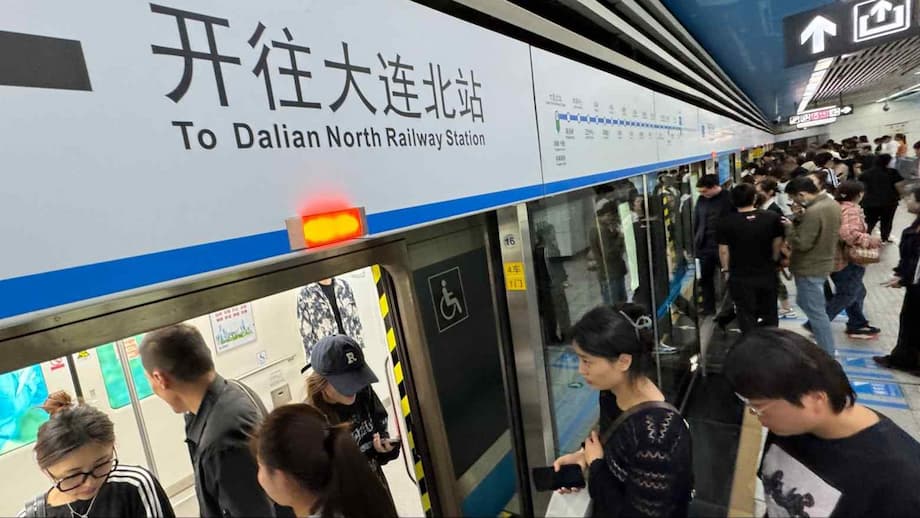China’s Metro Systems Grapple with Financial Crisis
Metro systems across China are facing a financial reckoning. As the country’s real estate downturn deepens and ridership patterns shift, operators in cities large and small are raising fares and cutting services in a bid to stem mounting losses. The moves mark a significant shift for a sector that, for decades, has been a symbol of China’s urban modernization and economic dynamism.
From the bustling lines of Beijing and Shanghai to the newer networks in cities like Foshan, the story is increasingly similar: declining revenues, rising costs, and a scramble to find new ways to balance the books. These challenges are not unique to China, but the scale and speed of the changes are drawing attention both domestically and abroad.
Why Are China’s Metro Systems in Trouble?
The roots of the current crisis are complex, but several key factors stand out. Traditionally, Chinese metro systems have relied on a combination of fare revenue, government subsidies, and income from land development around stations. This so-called “land-finance” model allowed cities to fund massive infrastructure projects by capturing the rising value of real estate near new transit lines.
However, as China’s property market has cooled, this model has come under severe strain. According to Hu Gang, president of the South China Urban Research Association, “In the past, the land appreciation effect around stations brought substantial returns. Governments used rising land values to fund operations. But with the real estate market in deep adjustment, this land-finance-driven subsidy model is under real pressure.”
At the same time, ridership has not kept pace with the rapid expansion of metro networks. In cities like Foshan, for example, the metro system covers over 150 kilometers but sees far fewer passengers per kilometer than neighboring Guangzhou or Shenzhen. The rise of private car ownership and electric scooters has further eroded the metro’s customer base.
Foshan Metro Group’s 2024 annual report paints a stark picture: operating revenue of 586 million yuan against costs of 2.689 billion yuan, resulting in a net loss of 178 million yuan even after government subsidies. The situation is similar in many other cities, where fare revenue alone would need to increase several times over to cover operating costs.
How Are Metro Operators Responding?
Faced with these challenges, metro operators are taking drastic measures. In Foshan, commuters have found themselves navigating dimly lit stations and warmer train cars as the system powers down lights and air conditioning to save money. Escalators are shut off, and service hours have been shortened, with all lines closing 30 minutes earlier than before. Train intervals have been permanently extended, and further reductions are likely if financial pressures persist.
These cost-cutting measures are projected to save over 10 million yuan annually, but they come at a cost to passenger comfort and convenience. Foshan Metro Group has stated that these steps are part of a broader initiative to “reduce costs and increase efficiency.”
Other cities are following suit, raising fares and reducing service frequency. The fare structure in many Chinese cities is mileage-based, with prices ranging from 2 to 12 yuan. However, even with fare hikes, operators acknowledge that ticket sales alone cannot cover the gap left by declining subsidies and real estate revenues.
Public Reaction and Broader Impacts
The changes have not gone unnoticed by the public. Commuters have expressed frustration at reduced service and higher costs, especially as inflation and economic uncertainty weigh on household budgets. For many, the metro is a lifeline, providing affordable and reliable transportation to work, school, and essential services.
Experts warn that fare hikes and service cuts risk creating a “transit death spiral,” where higher prices and less frequent service drive away riders, further reducing revenue and forcing even more drastic measures. This cycle has been observed in other countries and is a major concern for Chinese cities seeking to maintain vibrant, accessible public transit systems.
Comparing China’s Metro Crisis to Global Trends
China is not alone in facing these challenges. Around the world, metro and transit systems are grappling with similar issues: declining ridership, rising costs, and uncertain funding streams. The COVID-19 pandemic accelerated many of these trends, as remote work and changing travel patterns led to sharp drops in passenger numbers.
United States: The SEPTA and MTA Experience
In the United States, the Southeastern Pennsylvania Transportation Authority (SEPTA), which serves the Philadelphia region, is facing a projected annual deficit of $240 million as federal pandemic aid phases out. SEPTA has proposed a 21.5% fare increase and plans to cut service by 20%, eliminating dozens of bus routes and reducing frequency on others. If additional state funding is not secured, even more drastic cuts are planned, including ending service on several regional rail lines and shutting down operations after 9 p.m. each night.
SEPTA’s Chief Operating Officer Scott Sauer described the situation bluntly:
This is the beginning of what we have been saying is the transit death spiral.
The authority estimates that the cuts will cost it 350,000 daily trips across all lines of service, with severe impacts on mobility, economic activity, and quality of life in the region.
New York City’s Metropolitan Transportation Authority (MTA) has also faced financial turmoil. While federal aid and state funding have temporarily staved off fare hikes and service cuts, regular fare increases have resumed to maintain and improve service levels. In August 2023, the base subway fare rose from $2.75 to $2.90, with similar increases for weekly and monthly passes. The MTA continues to warn of looming deficits if ridership does not recover and new funding sources are not found.
Canada: TransLink’s Funding Solution
In Metro Vancouver, TransLink faced a $600 million annual operating deficit starting in 2026. To avoid major service cuts, the agency announced a plan combining fare increases, property tax hikes, and new provincial funding. The agreement includes a 5% fare increase in July 2026, a 0.5% property tax increase, and $312 million in operating income from the provincial government over three years. This package will keep the system afloat until at least 2027 and allow for some service expansion, but officials acknowledge it is a temporary fix rather than a permanent solution.
Denis Agar, executive director of the advocacy group Movement, commented:
This is a Band-Aid that gets partway to a permanent solution. We hope a plan in 2026 will provide a permanent funding solution and improve transit enough to avoid overcrowding.
Other International Examples
In Pakistan, the Islamabad Metro Bus system faced public outcry after a 100% fare hike, which was quickly rolled back following intervention by the prime minister. While commuters welcomed the relief, experts warned that maintaining quality service without sufficient revenue would be difficult, and suggested targeted subsidies and gradual fare increases as more sustainable solutions.
In Saudi Arabia, the Mecca Metro operates primarily during the annual Hajj pilgrimage, handling millions of passengers in extreme conditions. The system is heavily subsidized and designed to meet unique peak demands, illustrating the diversity of funding and operational models worldwide.
What Are the Broader Implications?
The financial struggles of China’s metro systems—and their counterparts abroad—raise important questions about the future of urban transit. Public transportation is widely recognized as essential for economic growth, environmental sustainability, and social equity. Yet, the traditional funding models are under strain, and new approaches are needed to ensure long-term viability.
The Limits of Fare Revenue
As the experience of Foshan and other cities shows, fare revenue alone is rarely sufficient to cover the full costs of operating a modern metro system. Even with significant fare hikes, the gap between income and expenses remains wide. This reality has led many experts to call for diversified revenue streams, including commercial development, advertising, and innovative public-private partnerships.
In cities like Shenzhen and Chengdu, commercial and transit-integrated developments contribute 30-50% of metro income, helping to offset fare shortfalls. Foshan, by contrast, has not yet diversified its income streams, making it more vulnerable to fluctuations in ridership and government support.
The Role of Government Subsidies
Government subsidies remain a critical lifeline for most metro systems. However, as public budgets come under pressure from economic slowdowns and competing priorities, the availability and reliability of these subsidies are increasingly uncertain. Policymakers face difficult choices about how to allocate limited resources, and transit agencies must make the case for continued investment in public transportation.
Innovation and Adaptation
Looking ahead, metro operators in China and around the world are exploring new business models and technologies to improve efficiency and attract riders. These include:
- Dynamic pricing and fare capping to make transit more affordable for frequent users
- Integration with other modes of transportation, such as bike-sharing and electric scooters
- Commercial development around stations to generate additional revenue
- Investments in digital ticketing and real-time information systems to enhance the passenger experience
As Hu Gang noted, “It’s essential for metro systems to learn from the experience of other cities and explore diversified business models to identify new growth areas under today’s changing circumstances.”
What’s Next for China’s Metro Systems?
The coming years will be critical for China’s metro systems. Operators must balance the need for financial sustainability with the imperative to provide accessible, reliable service for millions of urban residents. This will require difficult decisions about fare structures, service levels, and investment priorities.
At the same time, the broader economic and policy environment will play a decisive role. If the real estate market stabilizes and government support remains strong, metro systems may be able to weather the current storm. If not, more cities may be forced to follow Foshan’s lead, with further fare hikes and service reductions.
Ultimately, the fate of China’s metros will depend on their ability to adapt to changing circumstances, embrace innovation, and make the case for continued public investment in urban mobility.
In Summary
- China’s metro systems are raising fares and cutting service amid mounting financial losses, driven by a real estate downturn and declining ridership.
- The traditional “land-finance” funding model is under strain, and fare revenue alone cannot cover operating costs.
- Cities like Foshan have implemented drastic cost-cutting measures, including reduced service hours, fewer escalators, and higher fares.
- Similar challenges are playing out globally, with transit systems in the US, Canada, and elsewhere facing deficits, fare hikes, and service cuts.
- Experts warn of a “transit death spiral” if fare hikes and service cuts drive away riders, further reducing revenue.
- Innovative funding models, diversified revenue streams, and continued government support are essential for the long-term sustainability of urban transit.
- The future of China’s metro systems will depend on their ability to adapt, innovate, and secure stable funding in a changing economic landscape.












